October itinerary in Japan Day 3 (Fukui Day 1)
(Friday, October 22)
Table of contents
1. Maruoka Castle
On the third day (October 22nd), I headed from Ishikawa prefecture to Fukui prefecture. The first place I visited was Maruoka Castle. I had created an itinerary in advance, but when I bought a ticket at Kanazawa Station, I accidentally bought it at Fukui Station instead of what I should have bought at Awara Onsen Station, and I lost a lot of time. It takes 19 minutes by bus from Awara Onsen Station to Maruoka Castle, but 50 minutes from Fukui Station. Just in case, I will post the itinerary that I originally planned. This route is the most efficient.
JR Kanazawa Station 8:48 departure Shirasagi 56 Awara Onsen Station 9:24 arrival, Awara Onsen Station 9:30 departure 87 Awara Maruoka Eiheiji Line 9:49 Maruoka Castle arrival
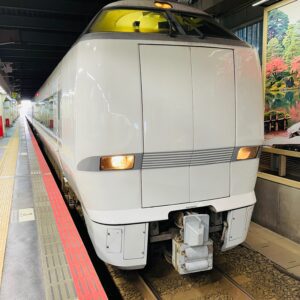
Even if you go to Tojinbo, Awara Onsen Station is more convenient than Fukui Station because it is closer to Tojinbo. Limited to weekends and holidays, there are free tickets to visit Tojinbo, Awara Onsen, Awara Onsen Station, Maruoka Castle, and Eiheiji Temple.
Maruoka Castle is a national important cultural property and one of the 12 existing castle towers. Maruoka Castle is the only existing 12 castle tower in the Hokuriku region. The castle was built in 1576 by Katsutoyo, the nephew of the Shibata Katsuie. Maruoka Castle has a castle tower, but there are no turrets or walls. Therefore, I get a lonely impression. However, the castle tower had a rugged, simple and sturdy impression, and I felt that it was suitable for battle.
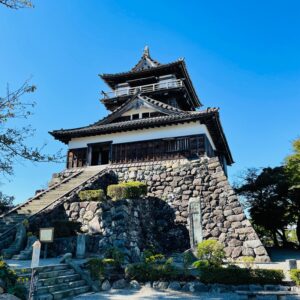
It is on the way to Eiheiji from Awara Onsen Station and Fukui Station, so I think it’s a good idea to stop by Maruoka Castle when you go to Eiheiji.
Admission: Adults Yen 450, Children Yen 150
2. Eiheiji Temple
I took a bus from Maruoka Castle to Eiheiji Temple. The buses I boarded are as follows.
Maruoka Castle 11:01 departure 87 Awara Maruoka Eiheiji Line 11:38 Eiheiji arrival
I was the only passenger to Eiheijiguchi Station. There are two ways to get to Eiheiji from Fukui Station: take a direct bus or take the Echizen Railway from Fukui Station to Eiheijiguchi and change to a bus.
Eiheiji is a Buddhist temple of the Soto sect and is the central temple of the Japanese Soto sect (Daihonzan). The Soto sect is one of the Zen sect (Soto sect, Daruma sect of Japan, Rinzai sect, Obaku sect, Fuke sect) and emphasizes zazen. Eiheiji was built in 1244 by Dogen Zenshi. The original name was Sanshoho Daibutsuji temple, which was changed to Eiheiji Temple in 1246.
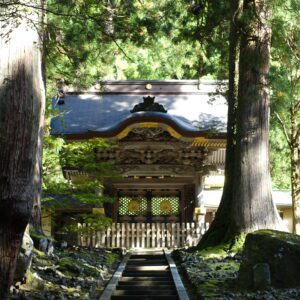
There is a national treasure “Fukan Zazengi” written by the founder Dogen in the treasure hall of Eiheiji Temple. There weren’t many people who went to the treasure hall, but in addition to national treasures, various national important cultural properties are stored in the treasure hall, so if you go to Eiheiji, go to the treasure hall. However, photography is not possible.
19 buildings such as the Sanmon gate and Buddhist temple are designated as national important cultural properties. Eiheiji can only be walked inside the building, but the ceiling paintings and the appearance of the building seen from inside are wonderful, and I forgot the passage of time. The staying time at Eiheiji is more than 2 hours. One of my tastes is that I like Zen Buddhist temple architecture, but I think Eiheiji is very worth visiting.
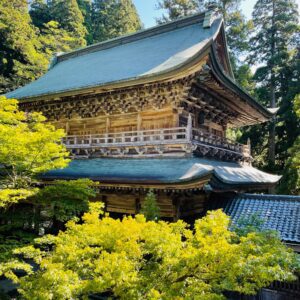
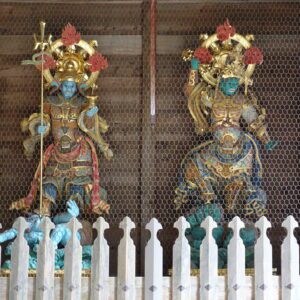
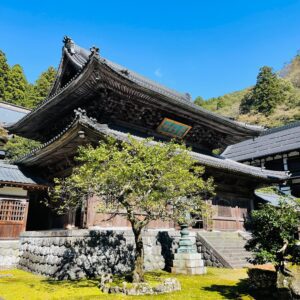
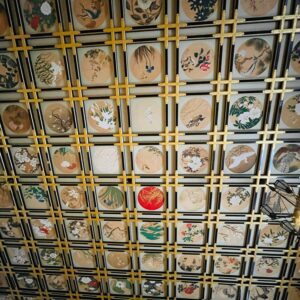
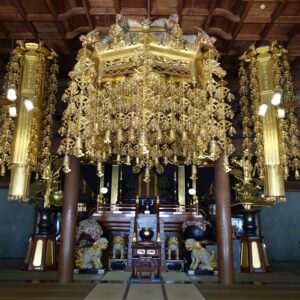
You can freely ring the bell at “Jakkouen” in the back of Eiheiji Temple. Like the treasure hall, few people visit “Jakkouen”, but why not try ringing a bell at Eiheiji Temple, which has a solemn atmosphere.
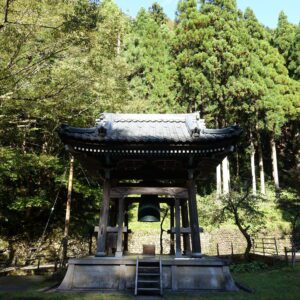
Admission fee: Yen 500 for adults, Yen 200 for elementary and junior high school students, free for preschoolers
3. Ichijodani Asakura Ruins
After visiting Eiheiji Temple, I took a bus to the Ichijodani Asakura Ruins. The buses I boarded are as follows.
Eiheiji 14:35 departure Ichijodani Asakura Limited Express Fukugen machinami 14:55 arrival
The Ichijodani Asakura Ruins are the ruins of Echizen Asakura. Ichijodani seems to have a population of over 10,000, which was one of the largest in Japan at that time. It was a natural fortress with mountains in the east and west and castle gates in the north and south. Yoshitane Ashikaga, Yoshiaki Ashikaga, and two shoguns of the Muromachi Shogunate have also relied on Mr. Asakura to come to Ichijodani. It was attacked and destroyed by Nobunaga Oda in 1573, and the rule of Ichijodani over the fifth generation of Mr. Asakura ended.
The Fukugen machinami is a three-dimensional restoration of the townscape of the castle town of the time when Mr. Asakura was in full glory. Some people dressed at that time. There was also a corner of art.
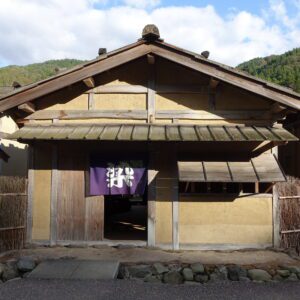
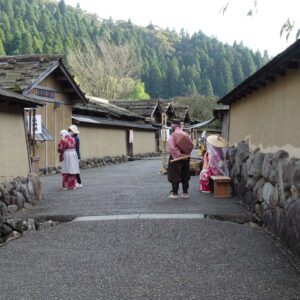
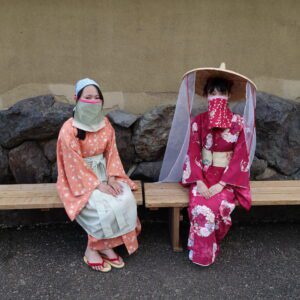
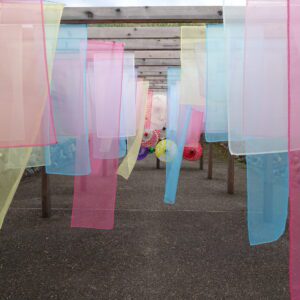
Just across the road from the Fukugen machinami, there are the Karamon, the fence, and the moat that represent the Ichijodani Asakura Ruins. Many large carps are swimming in the moat, and you can pay to feed them. The ruins of Asakura Yoshikagekan in the Karamon gate have only ruins, and the building has not been restored. I walked around a lot, but it wouldn’t be fun to walk without the building.
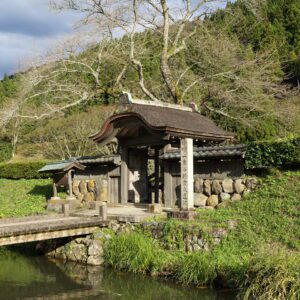
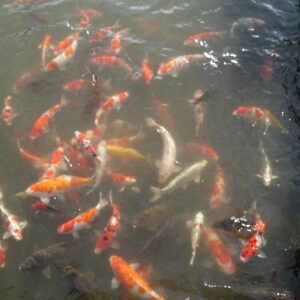

The Ichijodani Asakura Ruins are designated as a national special historic site, special scenic spot, and important cultural property. In addition to the Ichijodani Asakura Ruins, there are only five locations: Kinkakuji, Ginkakuji, Daigoji Sanboin, Heijo Palace, and Itsukushima Shrine. The Ichijodani Asakura Ruins are less well known than the other five, but I think it’s worth a visit when you visit Eiheiji Temple. In particular, the experience of seeing the accurately reproduced Muromachi period (1336 – 1573) cityscape and the people dressed at that time is unlikely to be possible at other tourist destinations.
Fukugen machinami (Restoration street) admission fee: Yen 330 for adults, junior high school students and younger, 70 years old and over free
I returned to Fukui Station after visiting the Ichijodani Asakura Ruins. The buses I boarded are as follows.
Fukugen machinami 16:29 departure 62 Ichijodani Togo Line Fukui Station East Exit 16:55 arrival
Note: The departure / arrival times, fees, admission fees, etc. of transportation listed in the text are as of the time of writing the BLOG. They may change in the future, so please check for yourself when you go on a trip.